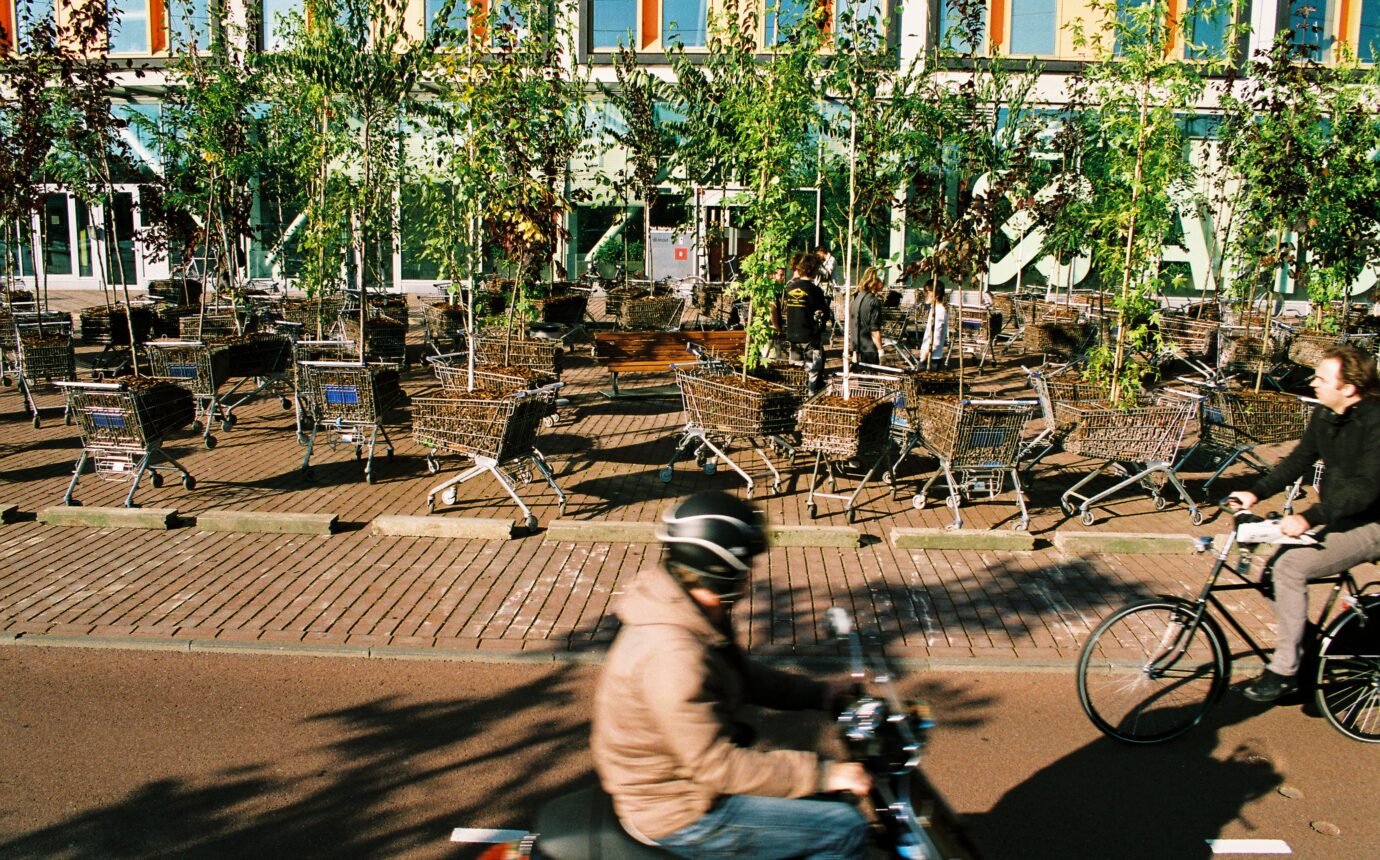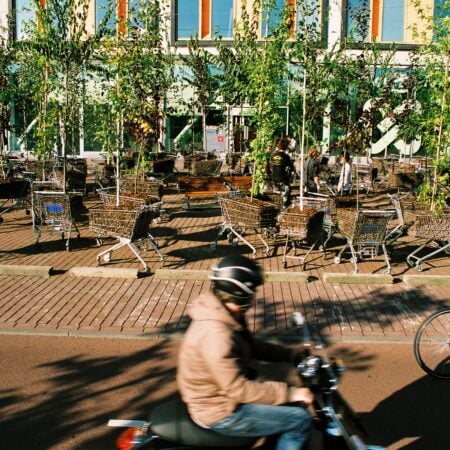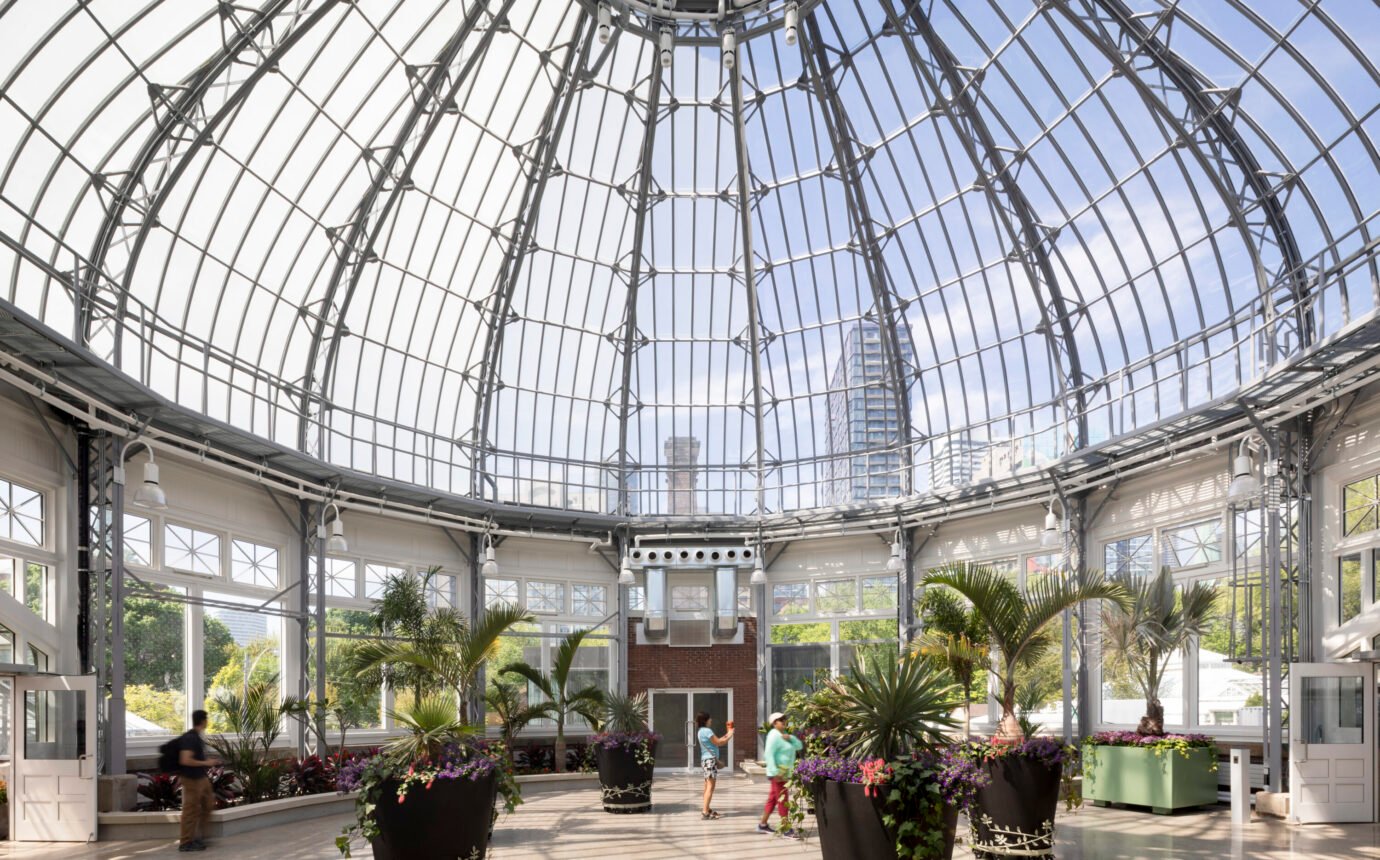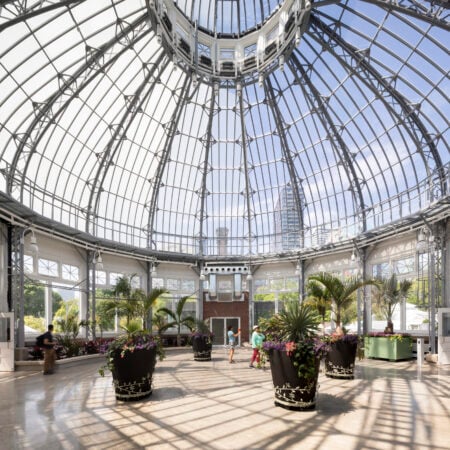Moving Forest Reimagines Toronto’s Urban Future


The Bentway’s playful installation of 50 trees in shopping carts shines a light on climate resilience and green equity
In a city grappling with rising temperatures, accelerated development and increasing inequity in green space accessibility, Moving Forest arrives not as a solution, but as an invitation to rethink our relationship with nature. Designed by NL Architects as a part of The Bentway’s Sun/Shade exhibition, this outlandish yet purposeful installation transforms a fleet of 50 shopping carts into mobile vessels for native trees—red maples, silver maples, sugar maples and autumn blaze—that roll through some of Toronto’s most sun-scorched plazas, creating impromptu oases of shade and community.
But behind the playful appearance of trees in shopping carts is a serious provocation: What does it mean for a city to move with nature, rather than pave over it? In conversation with one of the project’s collaborators, architect Gen Yamamoto, we begin to explore just that.
Having grown up in Tokyo and based in Amsterdam, Yamamoto brings a unique cultural and architectural lens to the installation. Inspired by Japanese animism and Western European urban design, he envisions trees not as passive fixtures in built environments, but as active participants—agents of change that migrate through the city, adapting to its evolving rhythms.
Yamamoto has come to appreciate the vital relief that trees offer—especially in the face of climate change. Reflecting on his experiences in both Tokyo and Amsterdam, he notes a stark contrast in how people interact with their urban environments. In Tokyo, oppressive summer heat drives people underground or indoors, making it difficult to enjoy the city’s outdoor spaces. In contrast, Amsterdam’s more temperate climate allows residents to spend time outside, often relying on the shade of trees lining the canals to stay comfortable. “Every city needs to adjust and adapt,” Yamamoto says, emphasizing that urban design must respond to local climates and evolving patterns of human behaviour in an era of environmental shift.
The City of Toronto’s goal to increase tree canopy cover to 40% by 2050 is ambitious—but equally important is how that greenery is distributed. Moving Forest plants that awareness. “We wanted to see how shading helps with people’s recreation and relaxation,” Yamamoto says.
Each day, the trees are repositioned to follow the arc of the sun, testing where and when people seek shade. They debut at Downsview’s revitalized YZD site—formerly the Downsview Airport lands—then journey to The Bentway Studio and on to the Waterfront neighbourhood and Harbourfront centres.
What makes these trees mobile is both poetic and practical: shopping carts. Yamamoto compares them to animals, ubiquitous yet overlooked. “They’re like lost deer,” he laughs. “When you see a cart alone in the city, it feels wild.” Their recognizable form invites interaction—people might instinctively push, touch, and gather around them. And in an architectural development culture that often regards nature as an afterthought or obstacle, Yamamoto sees the carts as a way to reintroduce nature into spaces where permanent infrastructure hasn’t caught up.
While Moving Forest functions as an art installation, it also acts as a prototype—one that could inform broader strategies for climate adaptation in dense, rapidly urbanizing cities like Toronto. Urban development cycles often leave landscapes barren during lengthy construction periods. Yamamoto believes temporary installations like Moving Forest can soften those hard edges, offering immediate relief and community engagement in advance of long-term infrastructure. He explains the tree installations can provide a “friendly kind of atmosphere for people who still need to go through such an area.” And when the installation ends, the trees don’t disappear. They will be permanently planted in public spaces across the GTA, ensuring that the project’s impact outlives its mobility.
Yamamoto’s experience in both Eastern and Western capitals informs his conviction that nature in cities must be adaptable, responsive and cared for collectively. “New urban plans have a tendency to be more and more dry and grey and concrete,” he says, “nature is difficult to control.” But what if trees were more like furniture? he explains—what if nature was more a part of everyday life?
In this way, Moving Forest becomes a commentary on both ecological precarity and environmental justice. In a world increasingly shaped by the climate crisis, we cannot afford to treat trees as static, permanent fixtures—especially when the landscapes they occupy are anything but. Yamamoto’s vision encourages a shift in perspective: Nature is not a given. It’s a relationship. And like all relationships, it needs care, attention and room to grow.
Yamamoto recalls a childhood folktale about a forest where the trees move just enough to confuse travellers, leaving them lost without guiding landmarks. That story inspired him as this project came to life. “Now people have to catch the trees or move with the forest,” he says, “nature is not always in front of you.”
As cities like Toronto face the urgent need for equitable green space, Yamamoto’s Moving Forest challenges us to see trees not as background, not just planted—but in motion. With the push of a cart, he reminds us that shade is not just a luxury. It’s a right. And that trees—often overlooked—can lead toward a more livable, accessible and equitable urban future.


























